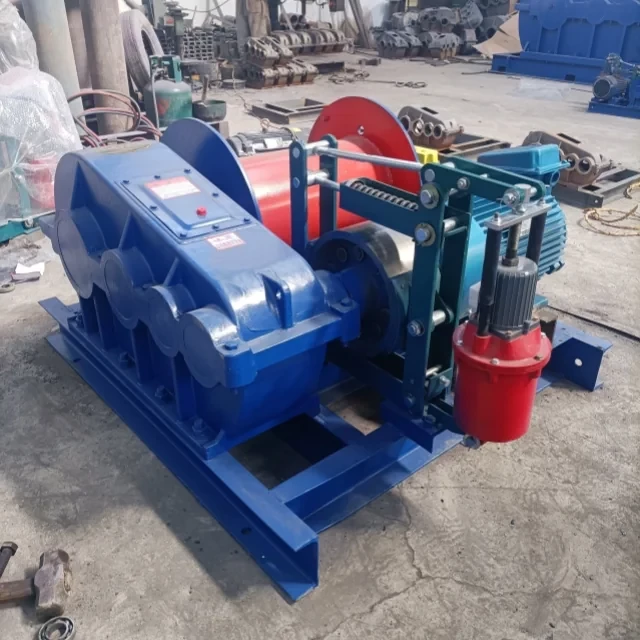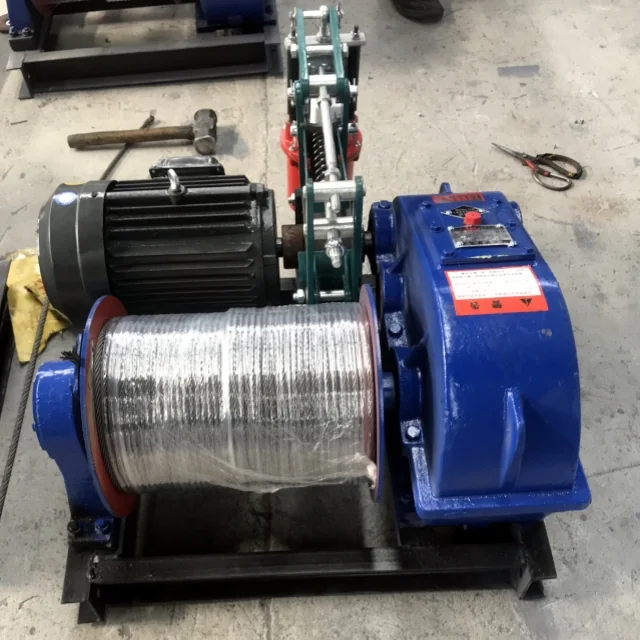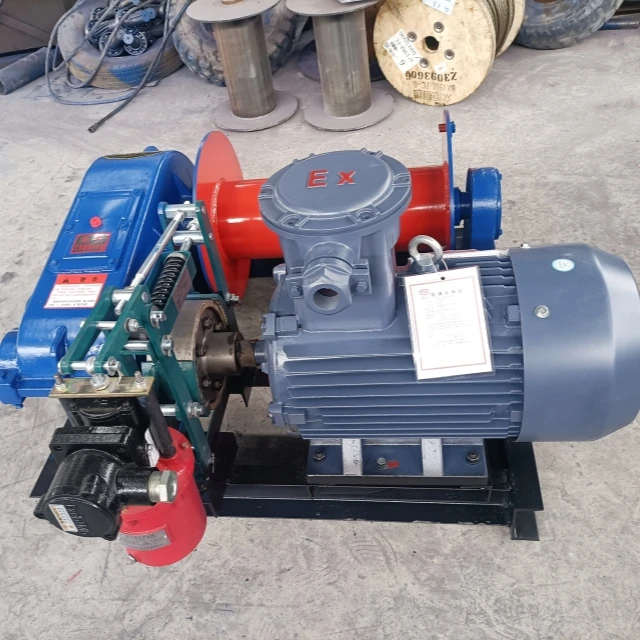Selecting the right winch for industrial applications isn’t just about lifting capacity—it’s about matching technical capabilities to operational demands. Whether you’re hauling heavy loads in mining, ensuring safety in explosive environments, or requiring millimeter precision in manufacturing, the wrong choice can lead to downtime, safety risks, or costly inefficiencies. This guide breaks down winch selection by industry and technical features, backed by engineering insights.
Specialized Winches and Their Industrial Applications
Heavy-Duty Material Handling: Mining and Construction
Winches in mining and construction face extreme conditions: abrasive dust, uneven terrain, and multi-ton loads. Key considerations include:
- Durability: Corrosion-resistant materials (e.g., hardened steel drums) withstand harsh environments.
- Load Capacity: Overhead lifts in construction often require 10–50 ton capacities, while mining may demand even higher ratings for ore extraction.
- Mobility: Skid-mounted or portable designs enable rapid deployment across job sites.
Ever wondered why some mining winches outlast others? It’s not just the motor—it’s the sealed bearings that keep grit from grinding gears to a halt.
Safety-Critical Environments: Oil/Gas and Hazardous Zones
In oil refineries or chemical plants, sparks from equipment can ignite flammable gases. Here, ATEX-certified explosion-proof winches (like those used in renewable energy and marine science) are non-negotiable. These feature:
- Intrinsically Safe Motors: Prevent ignition by limiting electrical energy.
- Enhanced Sealing: Keeps explosive vapors from contacting internal components.
- Remote Operation: Reduces personnel exposure in hazardous zones.
Reference: ATEX winches are deployed in oil/gas inspection projects and marine survey equipment, where safety and reliability are paramount.
Precision and Control: Marine and Manufacturing
Marine winches require saltwater resistance and precise load management for tasks like ROV deployment. Manufacturing lines, meanwhile, need smooth, repeatable motion for assembly processes. Look for:
- Variable Speed Controls: Fine-tune lifting or pulling speeds.
- Load Monitoring: Sensors prevent overloads that could damage delicate components.
- Low-Maintenance Designs: Sealed lubrication systems reduce downtime.
Technical Features for Operational Efficiency
Brake Systems and Load Management
A winch’s braking system determines how safely it handles suspended loads. Two critical types:
- Dynamic Brakes: Use motor resistance to control descent (ideal for repetitive lifts).
- Mechanical Fail-Safe Brakes: Engage automatically during power loss (critical for overhead lifting).
Pro Tip: For vertical lifts, redundant brake systems are like seatbelts—you hope they’re never needed, but they’re lifesavers when required.
Hydraulic vs. Electric: Power and Flexibility
| Feature | Hydraulic Winches | Electric Winches |
|---|---|---|
| Power Source | Requires hydraulic pump | Plug-and-play with electricity |
| Torque | Higher at low speeds | Consistent across RPMs |
| Maintenance | More hoses/fittings | Fewer moving parts |
Hydraulic models excel in heavy industrial settings (e.g., dragging felled trees in logging), while electric winches (like Garlway’s ATEX line) suit controlled environments needing clean operation.
Safety Compliance and Certification Standards
Certifications aren’t just paperwork—they’re proof of rigorous testing. Key marks to verify:
- CE/ISO 9001: Baseline quality assurance.
- ATEX/IECEx: Mandatory for explosive atmospheres.
- DNV/GL: Marine-grade reliability.
Did You Know? In Europe, ATEX compliance is legally required for equipment used in potentially explosive zones, from grain silos to offshore rigs.
Conclusion: Matching Winches to Your Workflow
- Prioritize Environment: Hazardous zones demand ATEX certification; marine settings need corrosion protection.
- Balance Power and Precision: Hydraulic for brute strength, electric for cleaner, quieter operation.
- Verify Certifications: Ensure compliance with regional safety standards.
For industries where reliability can’t be compromised—like oil/gas or precision manufacturing—Garlway winches integrate these features to keep operations running safely. Whether you’re lowering equipment into a volatile wellbore or positioning a turbine blade, the right winch isn’t just a tool; it’s your team’s lifeline.
Next Steps: Audit your operational demands—load weights, environmental hazards, and motion control needs—before comparing winch specs. The best choice aligns engineering with real-world conditions.
Related Products
- Electric and Hydraulic Winch for Heavy Duty Applications
- Best 18000 Pound Drum Anchor Trailer Winch
- Commercial Construction Mixer Machine for Soil Cement Mixing Concrete
- Small Electric Winch 120V and 240V for Compact Applications
- 12000 lb Heavy Duty Electric Boat Winch
Related Articles
- How Electric Winch Components Dictate Performance and Durability
- How Winch Certification Shields Your Business from Legal and Operational Risks
- How Electric Winches’ Engineering Enhances Efficiency and Safety in Heavy-Duty Applications
- How to Choose the Right Winch for Heavy-Duty Applications: A Scenario-Based Guide
- How Winch Design Powers Reliability and Adaptability in Demanding Environments
















